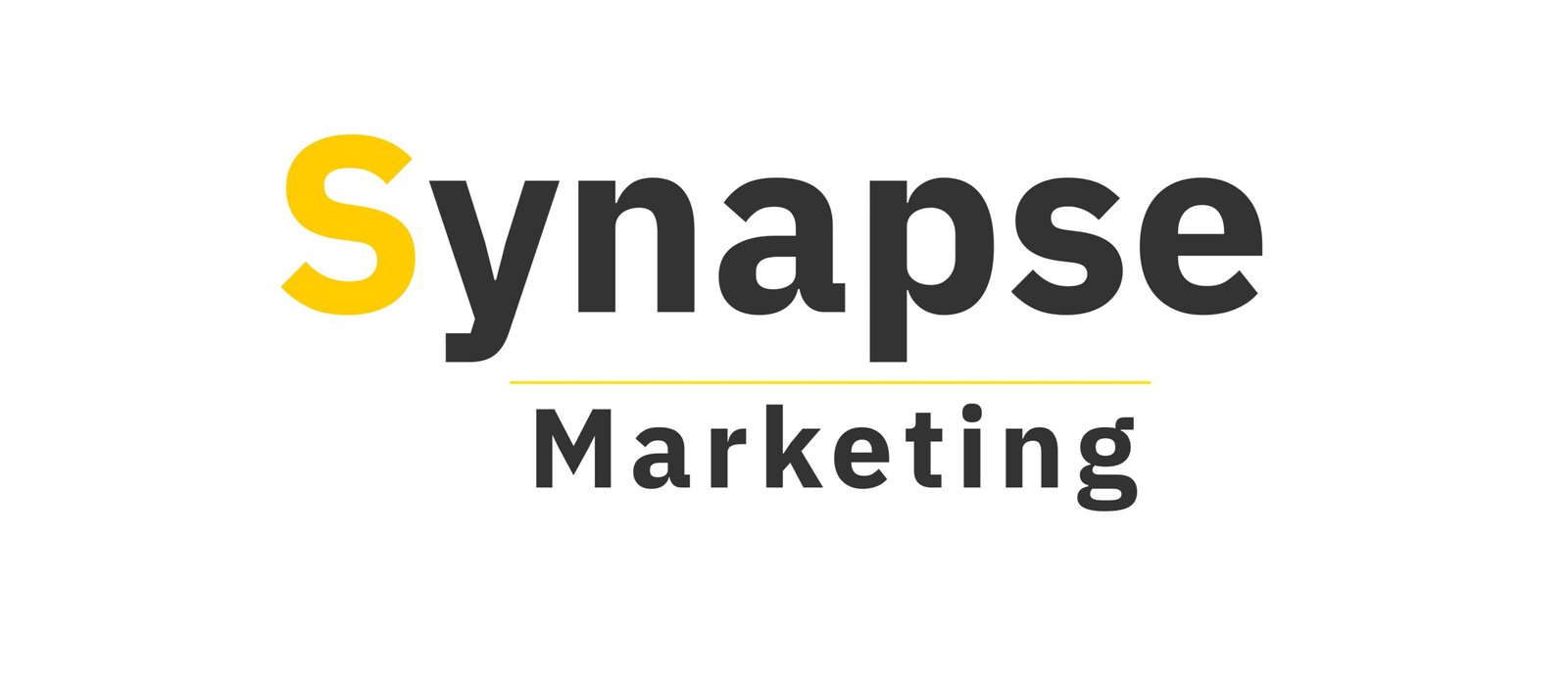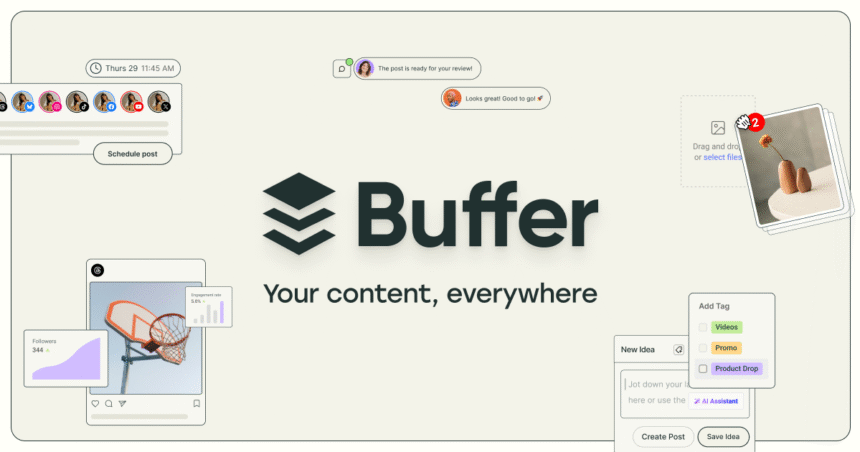If you’ve landed here looking for an honest, up-to-date Buffer review, you’re in the right place. I’ve used social media scheduling tools for years, Buffer included and I know how frustrating it is trying to figure out whether a platform truly fits your needs or just looks good in marketing materials.
Buffer has been around for over a decade now. In that time, it’s become one of the most well-known names in social media management software, especially for small businesses, freelancers, and marketing teams who want a streamlined tool for scheduling posts, analyzing results, and managing engagement. But does Buffer in 2025 still hold up against newer, shinier competitors like Later, Hootsuite, or Sprout Social?
That’s exactly what I’ll answer in this detailed Buffer review. I’m going beyond surface-level praise or marketing copy. I’ll break down Buffer’s features, pricing, analytics capabilities, and how well it really serves people trying to run social media efficiently without wasting budget or time.
By the end of this review, you’ll know if Buffer deserves a spot in your tech stack or if you’re better off exploring Buffer alternatives.
What Is Buffer?
At its core, Buffer is a social media management tool designed to help individuals, small businesses, and teams plan, publish, and analyze content across multiple platforms. If you’ve ever wished you could schedule a week’s worth of posts across Instagram, Facebook, LinkedIn, X (formerly Twitter), and Pinterest without logging into each platform individually, Buffer is the kind of solution built for you.
Buffer started in 2010 as a simple social media scheduler, but it has grown into a more comprehensive platform. Today, Buffer is split into three key products: Publish, Engage, and Analyze. Each focuses on a different piece of the social media puzzle whether it’s scheduling posts, replying to followers, or understanding your performance through detailed analytics.
What I’ve always appreciated about Buffer is its simplicity. Compared to alternatives like Hootsuite or Sprout Social, Buffer feels clean, intuitive, and focused. It’s not overloaded with features you don’t need. If your main goals are posting consistently, analyzing performance through Buffer Analytics, and responding efficiently to engagement, Buffer keeps things streamlined without sacrificing capability.
In 2025, Buffer continues to support most major platforms: Facebook Pages, Instagram (including Stories and Reels on paid plans), LinkedIn, X/Twitter, Pinterest, and even Google Business Profiles. Integration is smooth, and setup takes minutes, not hours.
For freelancers, startups, and small marketing teams, Buffer often hits the sweet spot between affordability and functionality.
Key Features Breakdown
Post Scheduling & Content Calendar in Buffer
One of the biggest reasons people come to Buffer is for its post scheduling and content calendar tools. Buffer makes it incredibly easy to plan and automate posts across platforms like Instagram, Facebook, LinkedIn, Pinterest, and X (Twitter). You simply connect your profiles, upload your content, and choose the dates and times you want posts to go live. The calendar view is clean, drag-and-drop simple, and perfect for visual planners like me.
Unlike some competitors, Buffer doesn’t overwhelm you with too many options upfront. It focuses on what matters—getting content scheduled efficiently. Whether you’re managing your personal brand or a small business account, this feature alone makes Buffer a standout social media scheduler.
Buffer Analytics & Reporting Capabilities
Once your posts are live, Buffer helps you understand how they’re performing through its analytics tools. Buffer Analytics tracks key metrics like engagement rates, follower growth, click-through rates, and overall reach. It’s not as deep as enterprise solutions like Sprout Social, but for small businesses or freelancers, it’s more than enough to spot trends and adjust your strategy.
I especially appreciate how Buffer simplifies reporting with visual dashboards and exportable reports. If you’re handling clients or presenting to a team, Buffer makes it easy to demonstrate results without extra work.
Social Engagement Features: Inbox & Monitoring
Engagement matters as much as scheduling, and Buffer’s Engage tool brings all your social conversations into one inbox. You can reply to comments, mentions, and DMs directly from Buffer. This saves time hopping between platforms and helps ensure you don’t miss important interactions. For small teams or solo entrepreneurs, it’s a huge efficiency boost.
While Buffer isn’t designed as a full-fledged social CRM, the inbox is clean, easy to use, and gets the job done.
Buffer for Teams: Collaboration Tools
Buffer’s team collaboration features are where it quietly outperforms a lot of its rivals. You can set user permissions, create workflows for approvals, and collaborate seamlessly with other teammates—all without stepping on each other’s toes. It’s especially useful for agencies or growing businesses where multiple people need access to the same accounts.
Integrations That Work Seamlessly with Buffer
Buffer integrates well with tools like Canva, Google Drive, Dropbox, and Zapier. This means you can pull content, manage workflows, and extend functionality without needing to leave Buffer’s dashboard. It also offers browser extensions and a mobile app, making it easy to schedule content on the fly.
In 2025, Buffer remains focused on doing what it does best: helping you schedule smarter, analyze faster, and engage better. While it may not offer the depth of analytics found in more expensive platforms, it’s one of the most user-friendly options for anyone looking to simplify their social media management.
Buffer Pricing 2025: Plans & Value
One of the reasons Buffer continues to attract small business owners, freelancers, and solo creators is its free plan. While limited, the free plan is perfect for anyone testing the waters with a new social media management tool or managing a very lean operation.
With the Buffer free plan, you can connect up to three social channels and schedule up to ten posts per channel at a time. It’s ideal for someone managing just a few accounts and looking to maintain a steady publishing schedule without any upfront investment.
However, if you need more posts in your queue or advanced features like analytics or engagement tools, you’ll quickly find yourself bumping against those limits.
Buffer Paid Plans: Essentials to Agency
Buffer’s pricing in 2025 remains competitive compared to tools like Hootsuite or Later. Paid plans are structured to scale with your needs:
- Essentials Plan: Starts at around $6 per month per channel. Unlocks unlimited scheduling and access to Buffer’s basic analytics. Ideal for freelancers or small business owners wanting more flexibility.
- Team Plan: Roughly $12 per month per channel. Adds collaboration tools, more detailed reports, and approval workflows. Perfect for agencies or growing brands with multiple stakeholders.
- Agency Plan: Around $120 per month, designed for managing 10 or more channels with dedicated support and advanced features.
All paid plans allow you to customize based on the number of channels rather than forcing you into tiers of unnecessary extras.
Is Buffer Worth It for Small Businesses?
From my perspective, Buffer delivers strong value, especially for small businesses focused on consistency rather than scale. While platforms like Sprout Social offer deeper analytics, they’re significantly more expensive. Buffer hits the sweet spot for affordability, ease of use, and core functionality.
If you need reliable social media scheduling and basic analytics without a steep learning curve or bloated features, Buffer’s pricing structure makes a lot of sense. I’d say it’s especially worth considering if your team is small and your focus is efficiency over complexity.
Pros & Cons of Buffer
No Buffer review would be complete without laying out the clear pros. Speaking from years of experience and recent testing in 2025, Buffer continues to stand out for its simplicity and efficiency.
Here’s what Buffer consistently gets right:
Ease of Use
Buffer’s dashboard is one of the cleanest in the business. Scheduling posts, monitoring performance, and managing engagement doesn’t require endless tutorials or hand-holding.
Affordable Pricing
Whether you’re sticking with the free plan or upgrading, Buffer’s pricing is transparent and scales logically as your needs grow.
Time-Saving Integrations
Integrations with tools like Canva, Dropbox, and Zapier save hours of manual work, especially when managing multiple clients or channels.
Solid Mobile App & Browser Extensions
Buffer’s mobile app and browser extensions make it easy to schedule content wherever inspiration strikes—whether you’re at your desk or on the go.
Focused on Core Functions
Buffer knows what it’s good at: scheduling, basic analytics, and light engagement management. It avoids the bloat that bogs down more “all-in-one” platforms.
Common Drawbacks to Consider
Of course, Buffer isn’t perfect. A balanced Buffer review must highlight the limitations too.
Limited Advanced Analytics
Compared to Hootsuite or Sprout Social, Buffer’s analytics are basic. If you need deep data insights, you might find it lacking.
Engagement Features Are Minimal
While Buffer Engage is handy, it’s not built for brands needing heavy-duty community management.
Restricted Free Plan
The free plan’s limitations on scheduled posts and connected channels mean most serious users will need to upgrade quickly.
Real User Feedback & Reviews
In writing this Buffer review, I spent time reading through user feedback across platforms like G2, Capterra, and TrustRadius. What’s clear is that Buffer’s reputation remains strong, especially among freelancers, startups, and small marketing teams.
Here’s what users consistently praise:
Simplicity & Clean Interface
Users love how intuitive Buffer feels, even for people who aren’t tech-savvy. It’s easy to connect accounts, schedule content, and keep everything organized without feeling overwhelmed.
Reliable Scheduling
Many reviews highlight how dependable Buffer’s scheduling features are. Posts publish when they should, and notifications work as expected. For busy teams, this reliability matters.
Affordable for Small Teams
Compared to alternatives like Hootsuite or Sprout Social, Buffer’s pricing is often highlighted as a strong point, especially for smaller organizations.
Helpful Customer Support
While Buffer isn’t known for live phone support, users appreciate the quick, helpful responses from their email and chat teams.
Where Users Say Buffer Falls Short
Of course, no platform earns universal praise. In most Buffer reviews, the biggest criticisms revolve around limitations for power users.
Basic Analytics
Many users say Buffer’s analytics are too simplistic, especially for agencies needing deeper reporting.
Limited Features Compared to Competitors
Some reviewers feel Buffer lacks the breadth of features offered by platforms like Later or Sprout Social, particularly around community management or complex automation.
Free Plan Constraints
Finally, users often mention that the free plan’s limits feel restrictive quickly, forcing upgrades sooner than expected.
Buffer vs Competitors: Hootsuite, Later, Sprout Social
Buffer vs Hootsuite: Key Differences
If you’re weighing up Buffer vs Hootsuite, the choice usually comes down to simplicity versus complexity. Buffer is built for users who want clean scheduling, light analytics, and a no-fuss dashboard. Hootsuite, on the other hand, offers deeper enterprise-level features, stronger reporting, and more robust team collaboration tools—but it comes with a steeper learning curve and a higher price tag.
For small businesses and solo creators, Buffer often feels more practical and affordable. For large organizations with complex needs, Hootsuite might make more sense.
Buffer vs Later: Which Is Better for Creators?
Later is another popular social media scheduler, particularly strong for Instagram-first brands thanks to its visual calendar and media library. If your focus is highly visual platforms like Instagram or Pinterest, Later could be a better fit. However, Buffer provides broader cross-platform scheduling and is better suited for those managing multiple types of accounts beyond just visual content.
Buffer vs Sprout Social: Enterprise Features Compared
Sprout Social positions itself as a more advanced social media management tool with CRM integrations, deep reporting, and stronger collaboration features. It’s also far more expensive. Buffer isn’t trying to compete at that level—it’s designed for smaller teams who don’t need enterprise-level bells and whistles.
Who Should Use Buffer?
When writing this Buffer review, one thing became clear to me: Buffer isn’t trying to be everything to everyone. It’s designed for a very specific type of user—and it does that job well.
If you’re a freelancer, solopreneur, or a small business owner, Buffer will likely fit your needs perfectly. It’s simple to use, affordable, and efficient. You won’t waste time navigating endless dashboards or unnecessary tools. Instead, you’ll get exactly what you need to plan, schedule, and analyze your social media posts.
Buffer also works well for growing teams and small agencies. Its collaboration tools, while not as advanced as enterprise platforms, allow team members to coordinate content workflows without stepping on each other’s toes. You can assign roles, approve posts, and manage multiple accounts—all from one place.
Buffer for Freelancers, Small Teams & Agencies
For agencies handling multiple small clients or businesses that don’t need heavy analytics, Buffer is a strong contender. It’s easy to onboard team members, track content pipelines, and deliver consistent scheduling without overcomplicating things.
If your needs are basic but professional—social media scheduling, light analytics, and some collaboration—Buffer continues to be one of the smartest choices on the market in 2025.
How to Get the Most from Buffer
If you’re using Buffer, getting the most value out of it comes down to how well you plan and schedule your content. Buffer’s scheduling features work best when you establish a consistent rhythm for your posts. I recommend creating a simple content calendar aligned with your audience’s peak engagement times—Buffer even provides some insights to help guide this.
Another tip: plan your posts in batches. This saves time and ensures you’re never scrambling for last-minute content ideas. With Buffer’s queue system, you can maintain a steady flow across all your platforms without having to log in daily.
Buffer Integrations for Efficiency
Buffer really shines when paired with other tools. I regularly use Buffer alongside Canva for content creation and Dropbox or Google Drive for asset management. These integrations help streamline my workflow and eliminate repetitive tasks.
The Buffer browser extension is another underrated feature. It lets you schedule posts from anywhere on the web with a single click—perfect for content curation or sharing industry news.
Finally, don’t overlook the Buffer mobile app. It’s well-designed and keeps you connected to your schedule, even when you’re away from your desk.
When used strategically, Buffer saves both time and mental energy.
Conclusion
To wrap up this Buffer review, here’s my honest take: Buffer remains one of the most accessible and reliable tools for social media scheduling in 2025. It’s not trying to compete with heavy-duty platforms like Sprout Social or Hootsuite in terms of analytics depth or enterprise features. Instead, Buffer stays focused on what it does best—helping individuals and small teams schedule smarter, analyze performance efficiently, and engage with audiences without unnecessary complexity.
If your priority is simplicity, affordability, and functionality that just works, Buffer continues to be a smart choice. For freelancers, small businesses, and even growing agencies looking to maintain consistency without burning out on tech tools, Buffer delivers real value.
It may not be flashy, but it’s dependable—and in the world of social media management, that counts for a lot.
Reference:
Frequently Asked Questions About Buffer Review
What is Buffer best used for?
Buffer is best used for scheduling social media posts, managing multiple accounts from one dashboard, and analyzing basic performance metrics across platforms like Instagram, Facebook, LinkedIn, Pinterest, and X (Twitter). It’s ideal for small businesses, freelancers, and content creators who need a simple, reliable way to maintain consistency on social media.
Is Buffer free to use?
Yes, Buffer offers a free plan, but it comes with limitations. On the free plan, you can connect up to three social channels and schedule up to ten posts per channel at a time. For more features like analytics, team collaboration, and engagement tools, you’ll need to upgrade to a paid plan.
How reliable is Buffer in 2025?
In my experience, Buffer remains a very reliable tool in 2025. Posts publish as scheduled, integrations work smoothly, and the platform consistently delivers updates to improve performance and user experience.
What platforms does Buffer support?
Buffer supports all major platforms: Facebook, Instagram (including Stories and Reels on paid plans), LinkedIn, X (Twitter), Pinterest, and Google Business Profiles. It’s versatile enough for most business needs.
Is Buffer better than Hootsuite?
Buffer is often better for users who value simplicity, affordability, and ease of use. Hootsuite offers deeper analytics and enterprise-level tools but at a much higher price. If you’re a small business or freelancer, Buffer is usually the more practical choice.
Does Buffer have good analytics?
Buffer’s analytics are solid for small businesses and individuals. It tracks key metrics like engagement, reach, and click-throughs. However, if you need in-depth reporting or complex data visualization, other tools like Sprout Social might serve you better.
Can I schedule Instagram posts with Buffer?
Yes, Buffer fully supports Instagram scheduling—including Stories, Reels, and carousel posts—on its paid plans. It’s a convenient option for creators focused on visual content.















